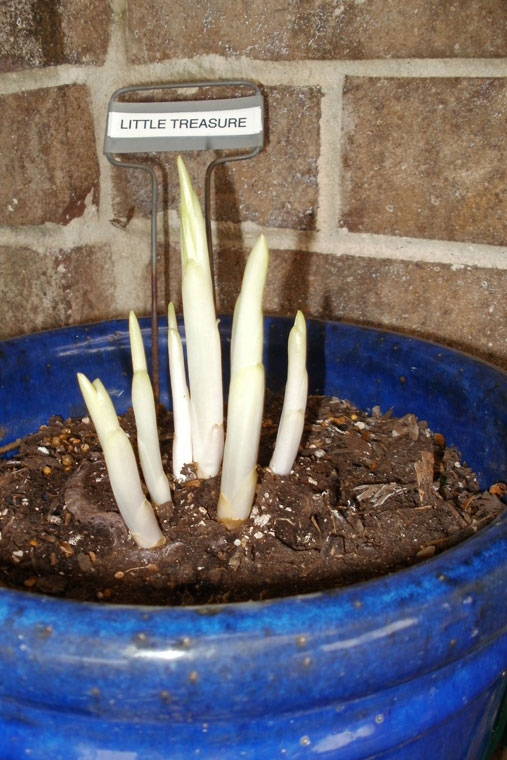|
What prompts our
hostas to wake up in the spring? Most
factors are obvious, but some may surprise you.
Unlike many
frigid regions in the North, the traditional Mid-South hosta parade
starts in
March. Sometimes
these guys and gals
poke their noses above ground in late February. In
the wake of an unusually mild winter, some
hostas have already broken dormancy. For
the past two weeks, pips of the usual early-risers have been restless,
peeking
from undercover to see if they can safely jump out of bed. Jack Frost, you know, may be
lurking around
the corner. Remember
several years ago
when he nipped early growth?
Most of my
in-ground hostas are still snoozing, but recent wet and mild conditions
are
sure to change that. I
expect to see
them waving at me before I’m finished clearing those ubiquitous winter
weeds. There’s not
a whole lot I can do to hold back
the hosta parade.
Air and ground
temperatures play big roles in rousing hostas from their slumber. Once the air warms to a
sustained average of
50 degrees and the ground reaches 40, there’s no holding our hostas
back. Some delay
their arrival because of genealogy,
but most join the parade within a couple weeks. Those
playing the blues are generally near the
back of the procession.
|
|
 |
| 'Little
Treasure' saw the light and led the parade into spring |
|
|
Wind can also
coax hostas out of dormancy. A
nice warm
breeze combined with a little rain can tease those with exposed
rhizomatous
tendrils and persuade them to hasten growth. While
cold winter rains are normal in the
Mid-South, they do keep the ground porous and ready for the spring
warm-up and
eruption of plant life—unlike northern states, where ice and snow tend
to keep
everything in a deep freeze until the vernal equinox (about March 21,
the
calendar’s official first day of spring).
There’s no
question that a stretch of sunny days will warm the ground rapidly. Sunlight is essential to
help hostas ring in
spring. That’s one
reason I park patio
pots in my darkened garage over the winter. By
putting these potted hostas in cold storage
and depriving them of light, I guarantee that they’ll have a longer
winter nap
and a more energized spring. But
I
remain awake to their needs. I
sprinkle
these dormant darlings twice a month to simulate occasional outdoor
showers. Another
good reason for seclusion is to keep
fine pottery from cracking during our typical freeze-thaw-freeze-thaw
winters.
Imagine my
surprise last week when I ventured into the garage and found a hosta
desperately stretching its wings. ‘Little
Treasure’ was the beneficiary of light
leaking through a crack in window shutters. While
every other hosta slept, this one
reached for the slightest sliver of sunlight. According
to my records, it woke up three
weeks early. This
lance-leafed lovely
and other treasures have since been moved back to the patio.
While
warmth,
sunlight, precipitation and wind encourage emergence of hostas, more
factors
are involved—particularly parentage. Hostas
native to southern climates around the world can be expected to show
their
colors early. That’s
why many of our
fragrant friends—descendants of the Chinese species plantaginea—lead
the
parade into March Madness. And
that’s
why my little ‘Dixie Chickadee’ is already strutting out front. |

